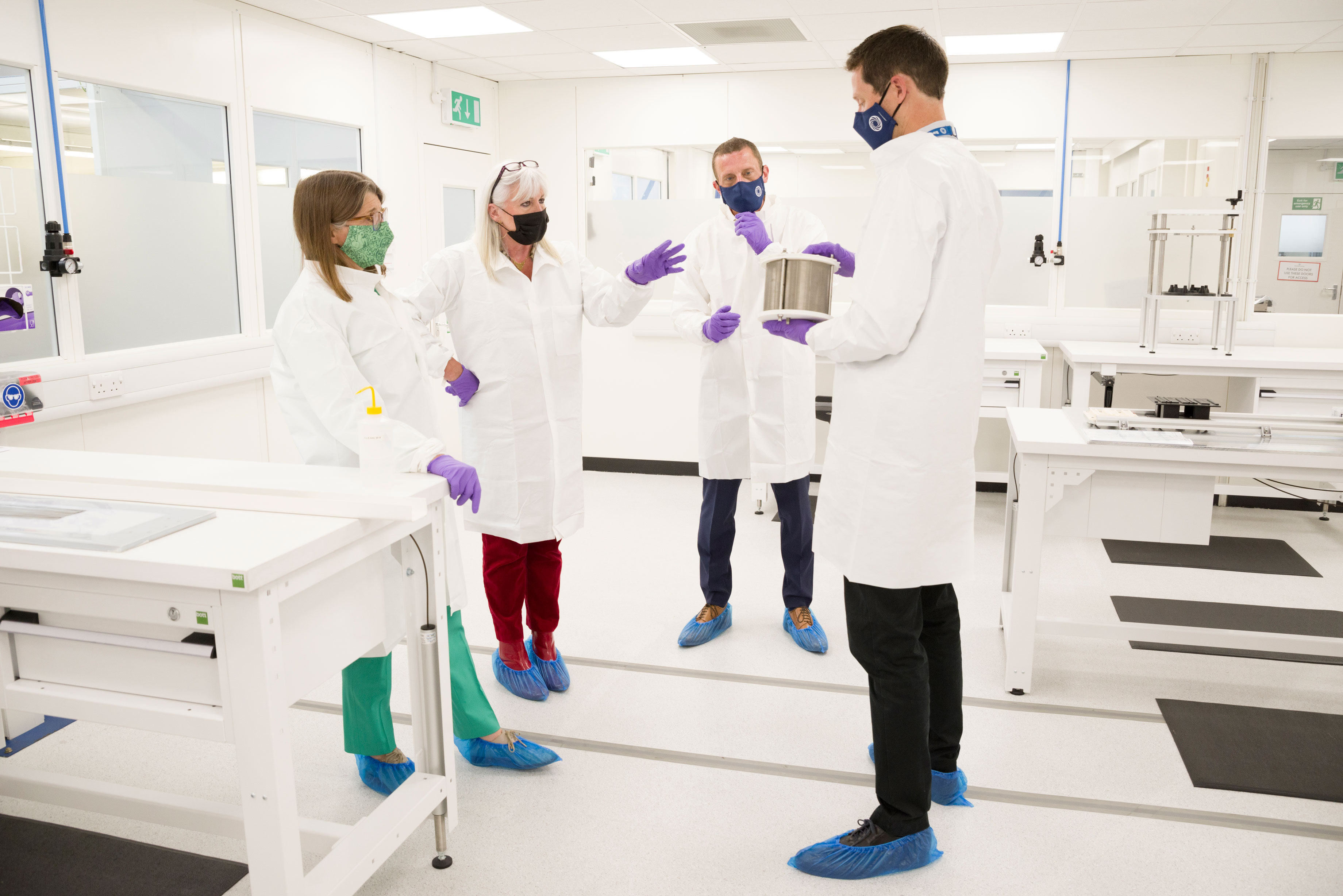Reaction Engines secures new UK Government funding for Space Access Programme

Above:
(left to right) Transport Minister Rachel Maclean, Science Minister Amanda Solloway, Mark Thomas, Reaction Engines CEO and Tom Burvill, Reaction Engines Applied Technologies Director in the Reaction Engines clean-room at Culham, Oxfordshire.
Courtesy UK Space Agency
The £3.9 million grant from the UK Space Agency will support the development of their technology, enabling low-carbon air-breathing space access propulsion technology to be applied more widely in the space sector and beyond.
Science Minister Amanda Solloway and Transport Minister Rachel Maclean visited Reaction Engines at its site in Culham, Oxfordshire, to discuss how the funding will help keep the UK ahead of the game in sustainable space exploration.
They also discussed how the technology Reaction Engines is developing for SABRE can respond to the challenge of driving Net-Zero into the transportation industry.
Science Minister Amanda Solloway said: “Backed by government, UK firms are leading the way in developing space technology that can reduce costs, improve sustainability and make space more accessible as we pursue our ambitious plans to grow the sector.
“It was fantastic to see this technology first-hand at Reaction Engines, a business that is spearheading efforts to ensure the benefits of low-carbon innovation are applied throughout the industry, while helping the UK to lead the world in space exploration.”
This investment builds on earlier government backing for Reaction Engines’ revolutionary SABRE technology, which promises exciting new developments both in space with potential for other technology spin-out areas including sustainable aviation fuels, unlocking atmospheric high-speed flight and prolonging electric vehicle battery life through innovative thermal management technology.
Transport Minister Rachel Maclean said: “This funding is not only going towards the development of cutting edge, low carbon technology in space, but it will also boost work to decarbonise our wider transport landscape – from aviation to electric vehicles.
“We will continue to invest in, and support, companies like Reaction Engines, as we look to a greener, cleaner future – including as we embark on sustainable space exploration.”
Mark Thomas, Chief Executive at Reaction Engines said: “The innovative and disruptive nature of SABRE technology unlocks new ways of accessing space, furthering growth and sustainment of the future space economy. This refreshed UK commitment towards that long term vision is incredibly important for both Reaction Engines and the UK space industry. The ‘space technology’ we are developing is highly versatile and transformational, enabling applications here on earth with a strong environmental focus.”
This new grant includes £5.3 million of activity that will be conducted through the next year and is part funded by the UK Space Agency (£3.9 million) and Reaction Engines. It follows £50 million of UK Space Agency funding for Reaction Engines since 2015.
The latest funding will secure near-term technology demonstration in hydrogen combustion, thermal management and engine control technologies, all critical to the air-breathing core of future SABRE systems.
It will also include strategic elements to explore the competitiveness of prospective SABRE-Launch Systems, whilst identifying key collaborative scenarios associated with vehicle and customer driven routes to market.
On the same day the ministers visited the Satellite Applications Catapult at the Harwell Space Cluster in Oxfordshire, where they met Stuart Martin, CEO and Lucy Edge, Chief Operating Officer and enjoyed a tour of the Satellite Applications Catapult Disruptive Innovation for Space Centre (DISC), before a discussion on the future of space and satellite applications in the UK.









